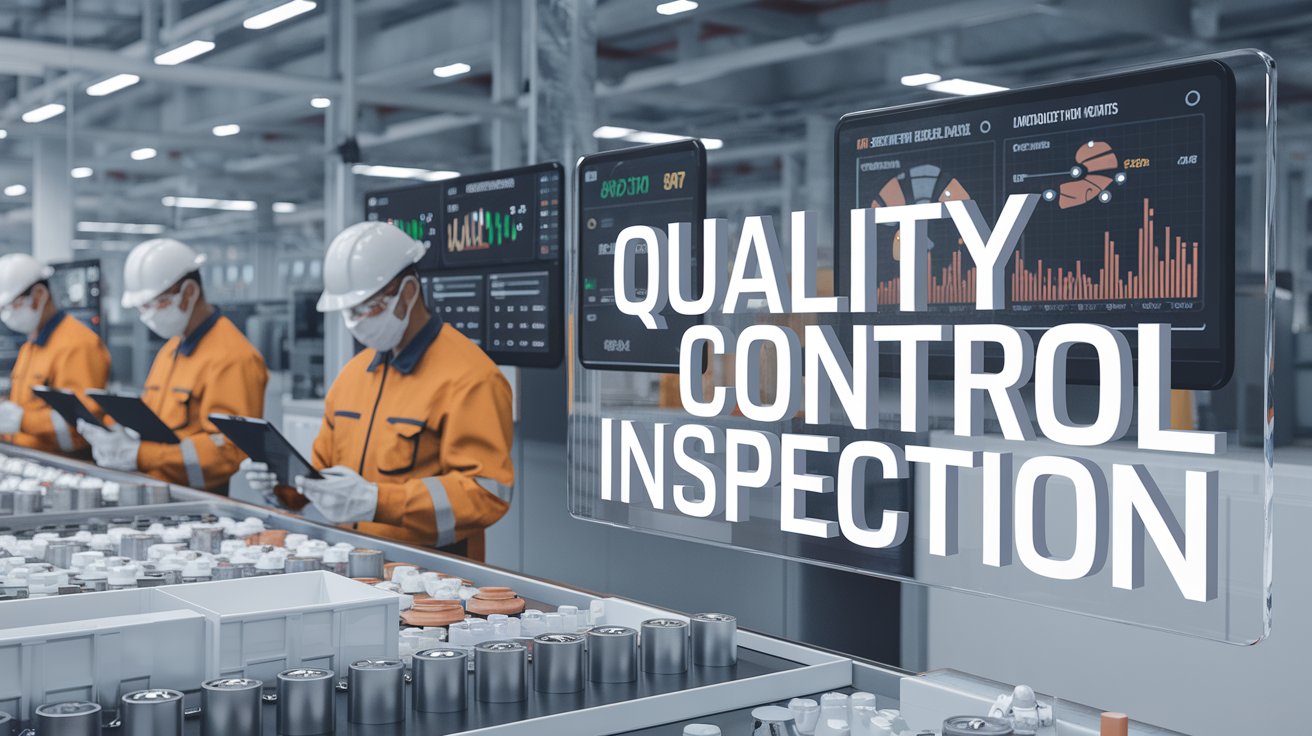In today's competitive industry, providing high-quality items is essential for sustaining consumer pleasure and loyalty. One of the most effective techniques to assure product quality is to conduct quality control inspection. This procedure entails systematically inspecting items at various phases of production to verify they fulfill set quality specifications. Let's look at the importance of quality control inspection, the method, and how it affects the manufacturing business.

What is Quality Control Inspection?
Quality control inspection is the process of inspecting a product to ensure that it satisfies the necessary requirements and standards. It is a critical component of quality management in the industrial and service sectors, where the goal is to reduce defects, improve product performance, and ensure regulatory compliance.ds.
Key Stages in Quality Control Inspection
- Pre-production Inspection: Before manufacturing begins, quality inspectors assess the raw materials, tools, and equipment to confirm they meet the specifications. This step helps identify potential issues early on, preventing costly mistakes down the line.
- In-process Inspection: This occurs during the production phase and involves checking the product at different stages to detect any issues early. These inspections help in identifying defects such as poor workmanship, incorrect material usage, or equipment malfunction.
- Final Inspection: Once the production is complete, a thorough inspection of the finished products is conducted. Inspectors check for conformity to design specifications, functionality, and packaging. Any defective units are either discarded or reworked.
- Post-production Inspection: This step involves checking the final product after it has been shipped or delivered to the customer. It ensures that products still meet quality standards and helps identify areas for improvement in future batches.
Types of Quality Control Inspections
- Visual Inspection: This is the most basic form of inspection, where the product is examined for defects such as cracks, scratches, or discoloration. It’s often used for cosmetic evaluation.
- Dimensional Inspection: In this type of inspection, specific measurements (length, width, height) are taken to verify that the product meets the required dimensions. This is especially important in industries like aerospace or automotive, where precision is critical.
- Functional Testing: Products are tested to ensure they operate as expected under normal usage conditions. This can include testing for electrical safety, stress tests, or durability.
- Destructive Testing: This involves testing a sample of products by subjecting them to conditions that would cause failure to evaluate how they perform under extreme conditions. This helps determine the product’s limits and reliability.
The Importance of Quality Control Inspection
- Ensures Product Consistency: Regular inspections ensure that each product manufactured meets the same high standards. This consistency is vital for brand reputation and customer trust.
- Reduces Defects and Waste: By identifying defects early in the production process, quality control helps minimize waste and reduce costs associated with rework, scrap, and customer complaints.
- Improves Customer Satisfaction: High-quality products increase customer satisfaction, reduce returns, and encourage repeat business, which is key to long-term success.
- Compliance with Regulations: Many industries are governed by strict quality standards, and quality control inspection ensures that companies meet these requirements, avoiding legal issues and penalties.
- Operational Efficiency: A strong quality control process can streamline production by eliminating inefficiencies, reducing downtime, and increasing overall productivity.
Quality Control Inspection Tools and Techniques
To carry out effective quality control inspections, companies use a variety of tools and techniques:
- Checklists: Simple yet effective, checklists ensure that every aspect of the product is inspected thoroughly.
- Automated Inspection Systems: In advanced manufacturing, automated visual and functional inspection systems use cameras and sensors to detect defects with high precision.
- Statistical Process Control (SPC): SPC tools use statistical methods to monitor and control the production process, ensuring product quality within specified limits.
- Quality Control Software: Modern technology allows businesses to use software that integrates inspection data, helping to track defects, generate reports, and improve decision-making.
Challenges in Quality Control Inspection
- Human Error: Despite technological advances, human errors during inspection can occur, leading to inaccurate results.
- Complexity of Product Designs: As product designs become more complex, inspections require more specialized knowledge and advanced tools.
- Time Constraints: Inspections, particularly during the final stages, can be time-consuming, affecting production schedules and delivery timelines.
Quality control inspection is an important component of the manufacturing process, ensuring that products meet the necessary standards and contribute to the company's reputation. Businesses that establish a robust quality control system can achieve consistency, eliminate faults, and retain customer happiness. As technology advances, so does the function of quality control in production, with improvements that improve the inspection process' efficiency and effectiveness. Quality control inspection, whether by visual checks or automated methods, will remain a critical component of operational excellence across industries.
